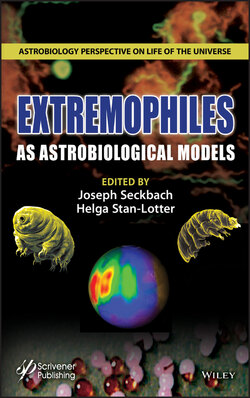Читать книгу EXTREMOPHILES as Astrobiological Models - Группа авторов - Страница 42
2.9 Conclusions
ОглавлениеIn the last fifty years, important advances in microbiology have challenged the view generated by the Viking Missions, which were very pessimistic about the existence of life on Mars. Thanks to research on extremophiles, we now know that life is extremely robust and able to adapt to extraordinarily diverse conditions, which has increased the probability of finding life on other planetary bodies. Of the different extremophiles, acidophiles are of special interest because they are the only ones that create the extreme conditions of the environment in which they thrive. The characterization of the Rio Tinto basin, an extreme acidic environment 92 km long, has answered some basic questions, like the origin of the extreme acidic conditions of the ecosystem, the identification and isolation of the microorganisms responsible for creating these conditions and the generation of iron secondary minerals along the river, but it has also posed new ones, such as the paradox of the unexpectedly high level of diverse complex eukaryotic microorganisms or the need to explain the detection of functional activities in non-permissive environmental conditions, all of which are of astrobiological interest. The discovery of Noachian iron lithological units on Mars, similar to those produced biologically in the Tinto basin, have given Rio Tinto the status of geochemical and mineralogical terrestrial analogue that can lead to a more detailed vision of the possible geomicrobiological processes that may have driven the generation of iron oxides and sulfates on Mars.
